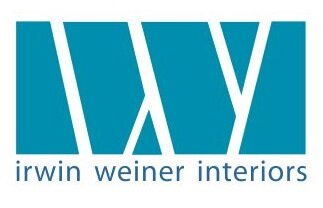Max Pow Factor
Irwin Weiner -- This week's New York Times and many other publications are focusing our attention on the desire (and therefore, demand) for luxury. The luxury fantasy is getting a lot of attention, and I'm hearing more talk of luxury now that our stock market and the mortgage industry are going through challenging times.
Funny how the old MGM musicals, depicting excessive extravagance, were so popular during the Depression. Luxury takes our minds off of . . . reality? depression? fiscal challenges?
I began my interior design career after the recession at the end of the 1980s. Clients who had redesigned their homes with a post-modern theme earlier in the decade were shocked to hear how worthless their renovations were less than ten years later. Fashion trends sell, but only while that fashion is current. Perhaps this was the reason why traditional design gripped the decorating scene in the 1990s. There was a fear of becoming too trendy and investing poorly in design resources. Personally, I'm still recovering from the sometimes too-traditional Bonfire-of-the-Vanities look with all its tassels, ornate fabrics, and layer-upon-layer of patterns.
I think people were scared that if they would spend money on something too extreme, come the next recession, it wouldn't sell. All I kept hearing was the word resale when it came to families' design decisions.
Based on what I've learned through my years in decorating, and History's knack of repeating itself, my big question when designing a new interior is: Should I design something safe and expected, or should I go for something more special -- and possibly extreme?
One of the reasons I justified spending more on my own home renovation project, spending more than what its overall investment worth, is because it was a way to express my skills as a designer. To a certain extent, I was willing to use myself as my own design guinea pig. My rural Pennsylvania neighborhood isn't fancy enough to warrant the return on my investment, but I invested nonetheless. And I invested with gusto, giving each part of the construction remodeling, the more-expensive finishes, the custom windows and woodwork, the expensive hardware, and all the other great details that maximum Pow Factor.
My own home project was completed just as the housing market began to slow down and thoughts of reselling the home, buying another one, renovating that project, and reselling it quickly flew out of my new Kolbe and Kolbe custom double-hung windows faster than you can say, "Let's decorate!"
Now that I'm over that dose of reality, I've settled into the idea that my family and I are here in our newly-remodeled house for the long haul. This weekend we had old and new friends over for a late summer barbecue. I've done the house tour with friends many times, but somehow, yesterday was different. Seeing the look of surprise on their faces when they saw the plastered walls and ceiling in our living room or the Philipe Starck fittings and fixtures and the soaring ceiling in our new master bath as it completely follows the roofline up into the stratosphere is worth it to me. POW! WOW!
Perhaps adding luxury to your home, and reaching high to maximize your home's Pow Factor, doesn't make the most economical sense. It's potential suicide if you want to add a new $500,000 masterpiece swimming pool thinking it's going to be your best resale decision. But if you want luxury in your life, if you're a born-again Esther Williams or Mark Spitz, and if you plan on building great family memories around the best damn pool in the Universe, then go ahead -- with my blessing -- and spend to the max for your heart's desire. If you love the Pow Factor and the way something over the top makes you, your family, and your friends and neighbors feel about your home, then it's a great investment. Throw the book out on reselling your home and focus on enjoying where you live.
Flipping is for pancakes.
